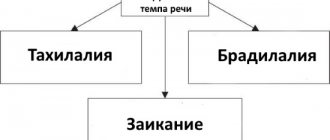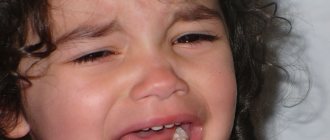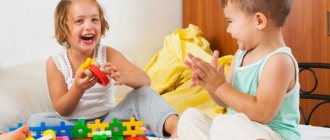Differential diagnosis of severe speech disorders
Svetlana
Differential diagnosis of severe speech disorders
Differential diagnosis of severe speech disorders.
Distinguishing similar disorders .
The work of a specialist involves two main directions: diagnostic and correctional . diagnosis is 70% of the success of a speech therapist. The effectiveness of speech therapy depends on how clearly, correctly and competently the diagnosis .
DIAGNOSTICS OF SPEECH DEVELOPMENT.
Diagnostics has a certain structure.
STEPS:
Introductory: familiarization with the child’s anamnestic data, study of medical documentation, psychological and pedagogical documentation, characteristics, extracts from those specialists who accompany the child (neurologist, ophthalmologist, orthopedist, etc.)
.
Purpose: to determine questions for conversation with parents, based on the available data in the conclusion.
Diagnostic : examination of speech and general mental processes.
Analytical: interpretation of the data obtained. Filling out the speech card . Formulating a conclusion, taking into account the factors resulting from the examination of speech and mental functions.
Goal: Determining the optimal ways of effective correction or corrective action specifically for each child.
Prognostic: based on the data obtained, assume what forecast of correctional work follows as a result of the impact of speech therapy correction. Development of an individual educational route.
Goal: to think over an individual educational program.
Informational (final)
: informing parents about the results of the child’s examination. Together with parents, ways and means of interaction are developed.
Goal: finding optimal ways to interact with parents.
Tasks of differential diagnosis
There are three main blocks.
1st block. Aimed at clarifying the diagnosis and determining the type of organization in which it is necessary to carry out correctional pedagogical training for the child. Also, determining the training program and raising a preschooler.
2nd block. Delineation of similar conditions in various psychophysical disorders , clarification of clinical, psychological, pedagogical and functional diagnosis .
3rd block. Forecasting the possibilities of development and learning of a child based on identified developmental characteristics, as well as determining ways and means of correctional work.
Distinction between similar conditions in various psychophysical disorders .
The psychological and pedagogical classification of speech disorders suggests that specialists use such a term as “general speech underdevelopment”
.
this speech disorder and a more complete and accurate definition in the works of R. E. Levina. She spoke about the general underdevelopment of speech, as a systemic disorder in which the formation of all components of the speech system , both the sound and semantic aspects of speech, is impaired. In his definition, the author identifies two conditions that are feasible and necessary for speech underdevelopment to be considered as a primary disorder .
These two conditions are normal hearing and primarily intact intelligence. E. F. Sobotovich distinguishes primary and secondary speech underdevelopment. There are criteria that allow us to distinguish between primary and secondary speech underdevelopment. But as before, two conditions remain: normal hearing and primarily intact intellect. These two conditions indicate that impairment , a type of underdevelopment, is of a primary nature. In the absence of these conditions, we can talk about secondary speech underdevelopment.
The main criteria have been defined to distinguish between ODD and mild degrees of intellectual disability.
1. Intellectual development.
*THD-Uneven or delayed development
intelligence.
*INTELLECTUAL DISABILITY - Total intellectual defect
2. State of mental activity.
Difficulties in mental operations that relate to the performance of verbal tasks. Almost all tasks and all types of mental activity are difficult.
3. Inertia of mental processes.
*No inertia of mental processes is observed.
*Such children are characterized by inertia of mental processes.
4. Help from the teacher.
*Accept the help of the teacher. The participation of the teacher in the formation of generalizations is necessary only to a small extent. The formation of generalization is gradually accompanied by the help of a teacher.
* Constant help and support with various types of mental operations.
5. Emotional reactions
*Characterized by differentiated emotional reactions.
*Insufficiency of this criterion. Weakly expressed emotional reaction.
For a more complete comparison of these conditions, it is proposed to pay attention to how children relate to their own defect. Children of these two groups show criticality towards their own defect in different ways. If children with SLI can feel their speech insufficiency , they may become anxious and worry about this.
Children with intellectual disabilities may be calm or more indifferent to their defect. It often goes unnoticed.
6. Originality of activity.
*Characterized by purposeful, controlled activity.
*Cannot control their own activities. Their activities are not purposeful.
7. Interest in completing tasks.
*Children are enthusiastic and interested in completing tasks
*They do not show interest in completing tasks.
8. Quick wits
*Able to be quick-witted
*They cannot demonstrate this quality, both in their activities and in the process with others.
Applying these criteria in diagnosing children with ODD (CHD)
and children with intellectual disabilities, will help to compare and conduct
differential diagnostics , which will be quite effective work and you will have the opportunity to distinguish between similar disorders .
Speech underdevelopment ONR (TNR)
and similar manifestations of mental retardation
1.*Voluntary attention
ONR (TNR)
ZPR
*Weak
*Weakness of voluntary attention is also manifested.
2. Visual and verbal-logical thinking
*Experience similar difficulties in the development of visual and verbal-logical thinking
3. The uniqueness of children’s activities.
*Characterized by purposeful, controlled activity.
*Activities are not purposeful, there is no control over one’s activities.
4. mental processes
*Relatively developed
*Delayed mental processes.
5. localization of the lesion
*Absence or underdevelopment of speech due to organic damage to the speech areas of the cerebral cortex. The speech-hearing and speech-motor analyzers are affected . (occipital, parietotemporal zones)
*Localization of the lesion: frontal lobes.
(hardware diagnostic testing is the most accurate diagnosis of mental retardation ).
As a result, the first two criteria reveal the similarity of violations . The last three help to establish differences, which allows us to establish and differentiate a more accurate diagnosis - (TNR or ZPR)
.
TNR can be considered as various forms of alalia (motor, sensory, mixed-sensorimotor, caused by organic damage the speech areas of the cerebral cortex. The localization of the lesion determines the form.
Differential diagnosis of sensory alalia and hearing impairment.
Criteria for distinguishing between sensory alalia and hearing impairment .
1. use of a hearing aid
*Cannot use hearing aids.
*Using a hearing aid significantly improves hearing.
2. voice characteristics
*Voice is clear and loud.
*Voice is quiet, not sufficiently modulated.
3. establishing contact.
*Difficult to establish contact. It takes a longer time to do this, using a variety of hikes.
*Quite contactable. They easily come into contact with adults.
4. features of perception.
*React especially violently to quiet sounds. However, if you increase the volume, speak louder, then there is no reaction to the manifestation of increased sound volume. Flickering inconstancy of auditory function is also characteristic.
*Have a constant threshold for the perception of sounds. As the volume increases, the quality of perception improves.
5. mental processes.
*Characterized by impaired performance , increased fatigue.
*You can observe disharmony in the processes of excitation and inhibition.
Applying these criteria, they help distinguish between similar manifestations of alalia and hearing impairment .
Distinguishing alalia from autism spectrum disorders. (RAS)
1. Emotional and personal contact with others.
TNR (ALALIA)
ASD
*This violation may not appear. Not significantly.
* This violation is a leading one , i.e. the formation of emotional and personal contact with the outside world primarily impaired
2. Facial expressions and gestures.
*Actively use non-verbal means of communication. Facial expressions and gestures help them replace verbal speech in the process of communicating with others. *Sign language and facial expressions are not available. They don't use it or own it.
3. Behavior and reactions
* Differentiated and adequate reactions
* His behavior is unpredictable for a specialist, their reaction is ambiguous. It is difficult to predict what a child may demonstrate in his behavior at the moment.
4. Motor sphere.
*Suffers significantly. A whole variety of motor disorders . Absence of typical stereotypical movements.
* Characterized by stereotypical repetitive movements. Shaking hands, tugging at objects, swaying the body...moving along a trajectory. Stereotypy is common in children with ASD.
5. Intellectual development.
*A peculiar delay, but above all those intellectual processes that are associated with speech and speech activity .
*There are completely different options. It may be normal, it may be accelerated. May be slow and uneven. There are varying degrees of intellectual disability. It is believed that there are as many types of children with ASD, so children are ambiguous in their behavior and reactions. Each child is a new type of autism spectrum disorder.
6. state of speech activity .
*Initially delayed, slow formation of speech activity . Speech negativism does not lead to a complete failure of verbal communication .
* Characteristic is the timely development of speech in the early stages of ontogenesis. Normal development of speech is possible, but at some point there is a refusal of verbal, verbal communication. Speech negativism .
The application of these basic criteria makes it possible to distinguish between such similar disorders as alalia and ASD . Correctly carried out differential diagnosis will allow not only to change the program of work with the child, but also to understand the child’s inner world.

![Hard and soft sound [d]](https://ls-kstovo.ru/wp-content/uploads/tverdyj-i-myagkij-zvuk-d3-330x140.jpg)





